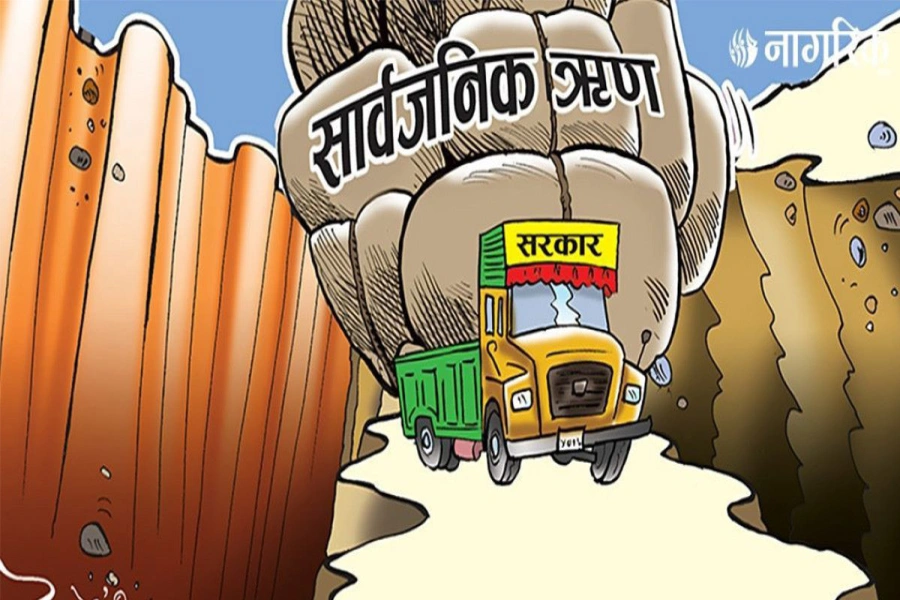As we witnessed the epilogue of the climate summit in Dubai, Dubai was able to converge the focus of the world for the past four weeks, not with its skyscrapers and desert adventures. Rather this time, it has been the host of COP-28, a global platform that discerns the global perspective on Climate Change.
There have been growing concerns over climate justice and funding to developing nations, particularly boosting them to combat climate change hurdles. The developing nations occupy a very nominal stake in producing carbons but they are the ones suffering the most. The unprecedented ramifications of climate change have posed tremendous risks to growing economies. There have been increasing voices for grants to be accorded to such nations that have been mired in a tapestry of geopolitics.
Nepal ranks as the fourth most climate-vulnerable country in the world and is highly exposed to a range of water-related hazards such as floods, droughts, and landslides, according to a World Bank report. The catastrophe resulted from the complexities of environmental hazards, challenges in combating the protection of endangered species, and the protection of biodiversity have been the focal point of discourse on environmental justice. There have been incessant efforts made to deal with these matters at the governmental level, various line agencies, NGOs, and INGOs. However, the aversion to risk is not significant with the given efforts. Developing nations like Nepal are in dire need of financial assistance as the country’s budget is highly deficit.
Nepal has been dealing with complex financial menaces in funding protection and conservation of nature and accelerating economic growth parallelly. It has been risky for developing countries to emphasize external debts as the Sri Lanka phobia seems to be a profound example for adopting a reluctant policy on external debts by Nepal Rastra Bank. With a huge divergence in the export-import ratio, the country relies remarkably on remittance as a source of foreign reserves. The prime concern of the central bank is to foster the preservation of foreign reserves leaving a very strict policy in access to foreign debts. Consequently, the environmental sector is less prioritized in terms of facilitation of finances to advance more programs on safeguarding nature and combating environmental menaces. In such a situation, the notion of Debt-For-Nature Swaps can be very effective in balancing the external policy of the central bank and stimulating projects on environmental conservation.
Public debt hits Rs 2.8 trillion mark

Concept of debt-for-nature swap
Debt-for-nature swap is an emerging practice in ecofinance. It involves the purchase of developing country debt at a discounted value in the secondary debt market and canceling the debt in return for environment-related action on the part of the debtor nation. It requires the involvement of the International Non-governmental Environmental Conservation Organization (IECO) as a third party that buys the debt of the debtor country at a discounted rate in the form of equity in local currency. The IECO has local contact with the domestic Non-governmental Environmental Conservation Organization (ECO) in the debtor country. Such ECO administers and facilitates the swap project. The swapped equity can be in the form of bonds which are spent in financing conservation activities in debtor countries. This takes off the foreign debts freeing the nation from the trepidation of external debt servicing liability. At the same time, this harnesses conservation activities creating a win-win situation for the debtor country.
International practices
The idea of debt-for-nature swaps was initially proposed in 1984 by Thomas Lovejoy, the former vice president for science at the World Wildlife Fund-US, in response to the Latin American debt crisis. The first ever DEBT-NATURE swap took place in July 1987 when an American NGO purchased USD 650,000 of Bolivia's foreign debt to a private bank at a discounted price of USD 100,000, and swapped its face value against Bolivian "conservation payments-in-kind" with the Government of Bolivia. Barbados entered into its own $150m debt-for-nature deal in 2021. The record-breaking deal of $1.6 billion as a debt-for-nature swap in the form of blue bonds by Ecuador is by far the largest to date, cutting the country's debt by over $1 billion once the $450 million of total conservation spending is taken into account. The blue bonds also known as Galapagos Bonds will finance the conservation of the Galapagos Islands, one of the world's most precious ecosystems.
Applicability in Nepal
Nepal is in dire need of financing environmental conservation projects. The collaborative approach of the government and environmental conservation agencies has led to significant progress in the conservation of endangered species including the Royal Bengal Tiger. As a result, the number of tigers has doubled in a decade. However, the real challenges have appeared to maintain the pace of conservation with the emergence of climate change hazards for which Nepal is prone to suffer from depletion of biodiversity, loss from ecotourism, and unrectifiable loss from the agro-industry. This stipulates the onus on the government to enlarge the size of the budget to combat the above-mentioned challenges. The debt-for-nature swap notion comes into play in this situation. While Nepal has been championing on raising the climate change agenda, this has been a medium to draw the gracious attention of IECO which can leverage Nepal’s position to foster involvement with the IECO in pooling finances. While the World Wildlife Fund (WWF) is the pioneer of this concept, it is fortunate for us that the WWF has been actively engaged in Nepal. The WWF has been a major IECO that has extensive working areas in the fields of Wildlife, Freshwater, Climate and Energy, Forests, and Governance for 30 years. We can avail these networks by making proud marketing about the triumph we have obtained in the field of environment and wildlife conservation. As an LDC, Nepal exports potential for public goods to the rest of the world.
Conclusion
In the debt-nature swaps so far, the monetary and fiscal implications have been negligible because of the small amounts involved. Similarly, there is a chance of an uprising of voices against the control of domestic lands by foreign entities under this scheme. This may raise the question of jeopardizing sovereignty. There is an increment in financial burden due to the exchange of loans which is usually done at a discounted rate. Amidst all this, the global debt crisis is rampant in developing countries like Nepal. While climate diplomacy is at its peak, Nepal should leverage its diplomatic approaches to participate with various IECOs to instigate the debt-for-nature swap proposals. Nepal should opt to explore debt-nature swaps proposals for the best interest of the country.






































